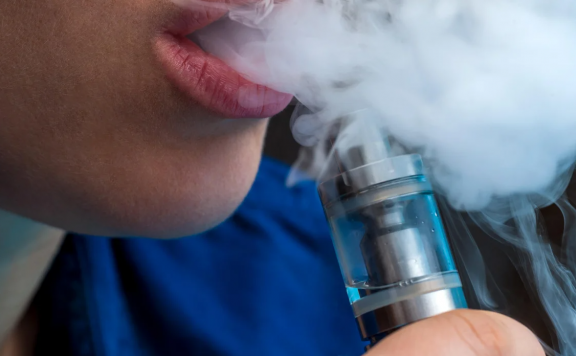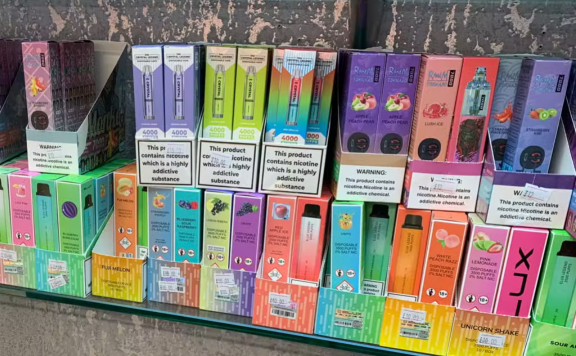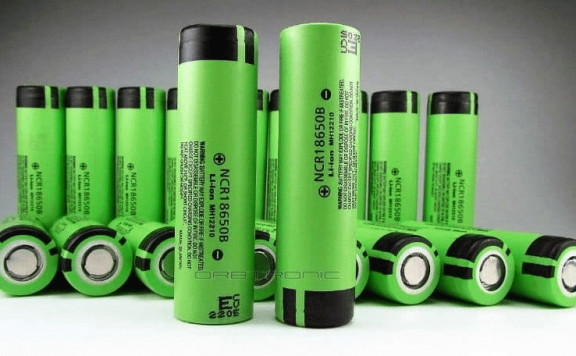A new study that found excessive amounts of heavy metals in vapes indicates that the government should necessitate further testing and labeling to better safeguard the public.
The research, conducted in collaboration with Health Canada’s Office of Cannabis Science and Surveillance as well as the National Research Council’s Metrology Research Centre, discovered high quantities of certain metals in cannabinoid vape liquids from both the authorized and illicit marketplaces in Canada.
Some of the samples—20 regulated and 21 illicit—”greatly surpassed” the European Pharmacopoeia’s accepted tolerance level for elemental toxins in inhaled goods.
Cannabis vape liquid samples (from the Ontario Provincial Police on the illegal side and the OCS on the legal side) were tested for metals commonly found in cannabis, such as lead, mercury, cadmium, and arsenic. These elements can be found in the environment due to fertilizers, pesticides, or other factors.
Metals including iron, copper, chromium, cobalt, and several others that could be available because of leaching from the metal materials of the vape pens themselves were also evaluated in the specimens. According to a study, the possible high acidity of cannabis vape liquids can make the metals disperse into cannabis oil.
Cadmium, mercury, and arsenic levels were all within the universally acceptable tolerance levels in all of the analyzed samples, but heavy metal concentrations surpassed the permissible limits in one lawful and six unauthorized vape pens. Nickel concentrations across several unauthorized samples were up to 900 times higher than the prescribed limits.
Just a limited number of the analyzed specimens surpassed vanadium and cobalt concentrations, and various samples from across the markets surpassed lead, nickel, copper, and chromium levels. Other unlawful market samples had lead levels up to 100 times greater than the specified range.
Researchers also discovered differences in heavy metal levels in samples from similar products purchased during the same time from the common manufacturing batch.
Given the available dates of packaging, all vaping devices evaluated were no older than eight months. Some studies have discovered rising amounts of leaching from nicotine vapes that have been in the stores for over two years, implying that a similar process could extend to cannabis vaping products too.
So many other studies have found metal particles in the atomizers produced by nicotine vaporizers. The vape equipment in this research was heated up and cooled numerous times to effectively imitate everyday consumer utilization, raising the possibility that this method contributes to the metal’s erosion into the vape liquid.
Nevertheless, the items used in this survey were not subjected to this intervention. According to the researchers, this could refer to other contamination sources including the electrical connector core and stainless-steel aerosol tube as a possible source of the discovered particulate.
The health risks associated with inhaling these heavy metals, particularly in frequently super fine aerosolized granules, are substantial.
Metals inhaled are readily absorbed and can be transferred to other body parts. The lungs are especially vulnerable to nickel toxicity, according to the researchers, with negative consequences varying from lung acute inflammation of the lungs to stimulated sinusitis and rhinitis as well as allergic dermatitis.
Even small amounts of ingested lead can raise the likelihood of kidney and cardiac diseases, and inhalation of copper and chromium can cause a decrease in lung function and a higher likelihood of chest pain, respiratory irritation, and asthma.
Furthermore, the existence of nanoparticle particles in vape aerosol is a matter of great concern to your health. These absolutely tiny particles can penetrate far into the lungs, where they are more rapidly absorbed and have a stronger reaction with the body.
The irregular heating potency of the majority of cannabis vaping devices is also a source of worry, as increased levels of heat have the capacity to transform, risky compounds.
Due to the sheer high heavy metal concentration in even lawful vaping devices, the research teams suggest that Health Canada as well as other cannabis regulatory bodies take into account laws that require extra heavy metal laboratory tests. According to the article, lab tests should be necessary after processing cannabis into a vape liquid, rather than just the raw cannabis materials, as Health Canada requires currently.
Again, it also shows that Health Canada may seek clarification about the metallic components of vaping products, as well as the date of filling of the vaporizers, to assist consumers in making more intelligent choices, as well as standards for vaping hardware fabrication and the components used.
Previously, the National Research Council and the OPP provided testing details on unlawful vaping devices that contained significant concentrations of unpermitted pesticides and misleading THC listings.
Similar findings from clandestine goods confiscated in those provinces have been published by New Brunswick and British Columbia.
Health Canada is scheduled to announce regulations on some cannabis vape pen flavorings soon. The new proposals were scheduled to become effective in 2022.
These proposed changes would prohibit ingested cannabis tinctures from having a flavor “apart from the flavor of cannabis” in the manufacturing, selling, advertising, packaging, or labeling, and would equally apply to ingested cannabis tinctures sold for medical as well as non-medical reasons.







